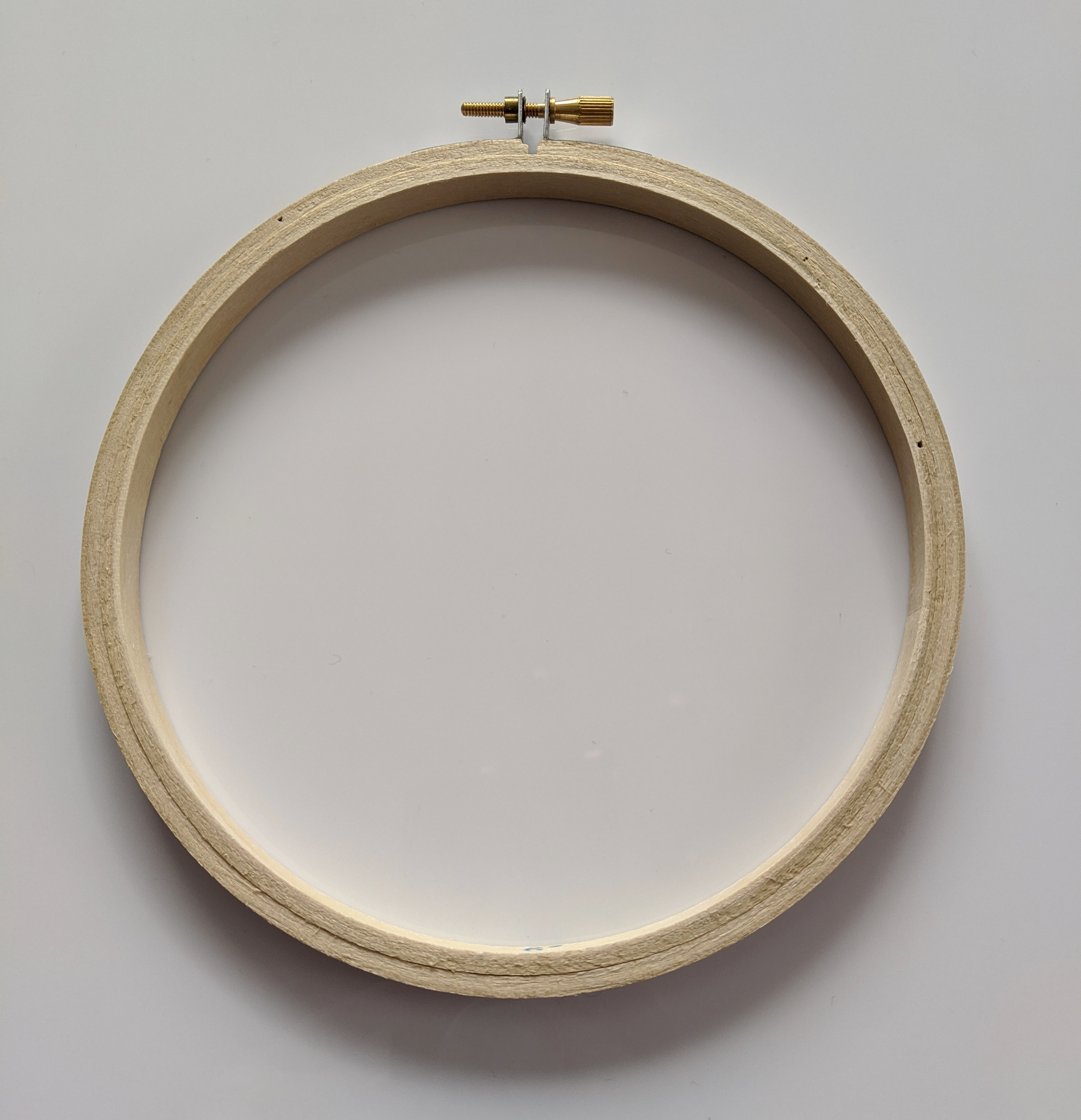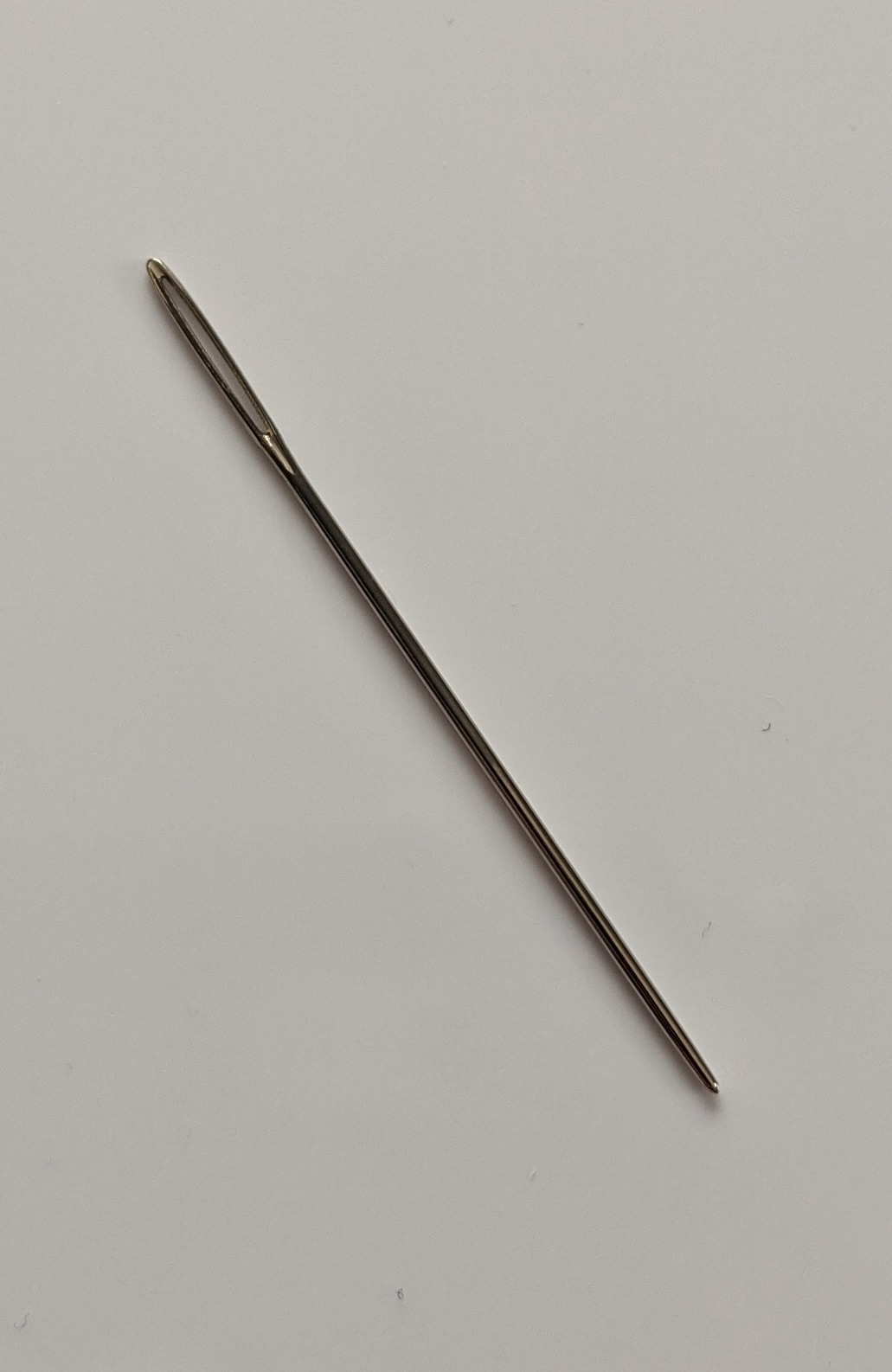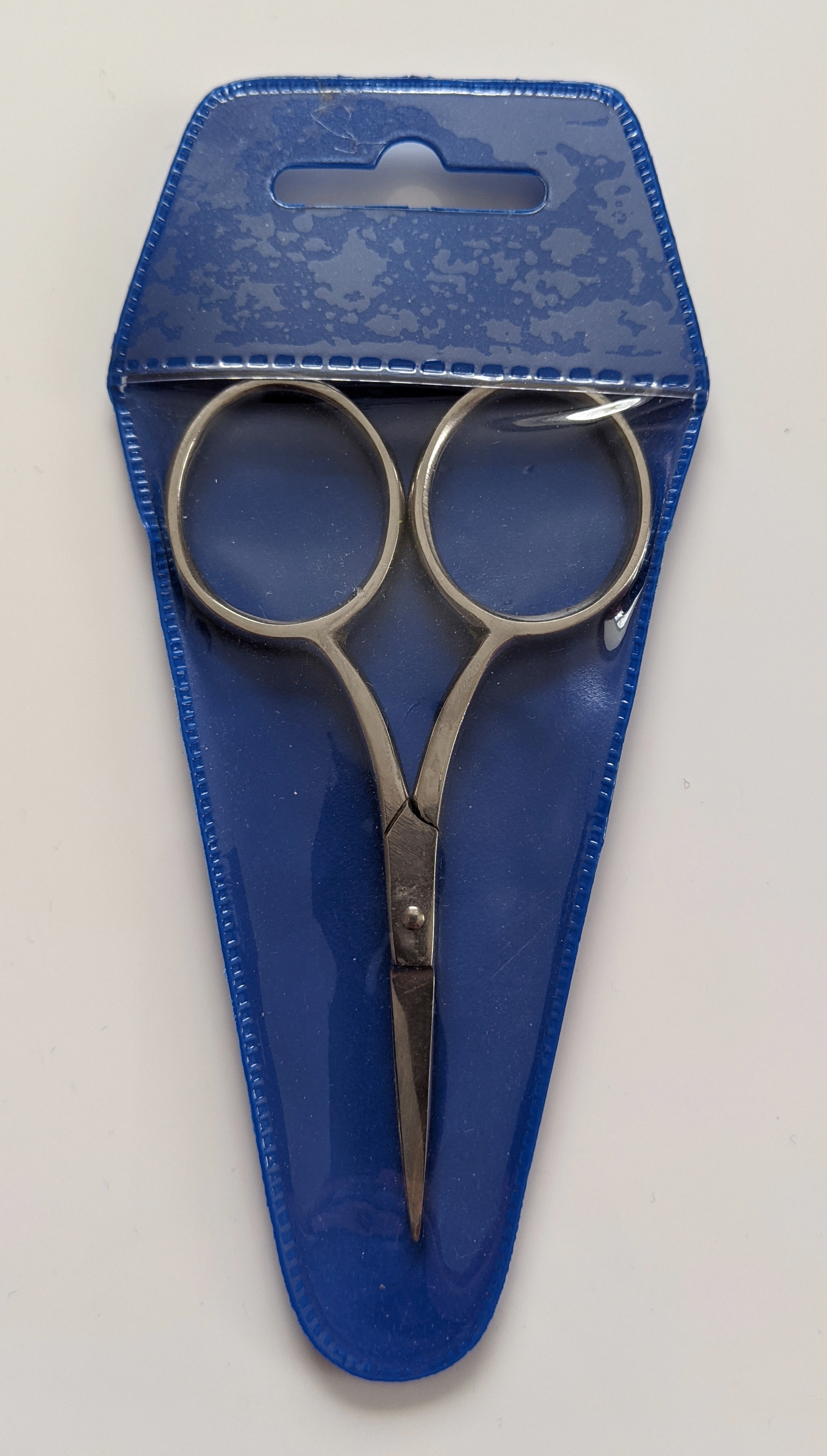Prerequisites
Overview
Teaching: 15 min
Exercises: 0 minQuestions
What equipment do we need to begin cross stitching?
Objectives
Become familiar with the cross stitching equipment
- Pattern chart
- Fabric
- Embroidery hoop
- Coloured thread
- Needle
- Scissors
- A needle threader (optional)
- A needle minder (optional)
Pattern chart
The pattern chart is a gridded piece of paper that lays out the design we’d like to stitch.
Each square on the grid represents one full cross stitch and the grid often has a 10x10 square grid in bold to assist with counting. The pattern chart will contain symbols within the grid and a key that links each symbol to the number of coloured thread we should use to create that stitch with. The colours and layout of the stitches will help build up our pattern.
Fabric
We also need something to stitch onto, which is usually some kind of fabric. The fabric most commonly used for cross stitch embroidery is called “aida”. Aida is useful for cross stitching as it is woven in such a way that it has evenly-spaced holes that form the corners of our stitches. It is a type of “even weave” fabric, which means that the number of threads in the vertical direction matches the number of threads in the horizontal direction.
How far apart the holes in the aida are is described by the fabric’s “count”. Most commonly, cross stitching is done on 14 count aida. This means that 14 stitches will fit in 1 inch of fabric. The higher the count, the more stitches per inch you will get.
 |
|---|
| Aida can be brought pre-dyed in a range of colours or you could be adventurous and dye it yourself! |
How much fabric do I need?
Your pattern chart should contain information of the dimensions of the completed pattern on different counts of aida. It may say something like:
5”x6” 14 count
This means that the finished stitched area will take up 5”x6” providing you use 14 count fabric. When selecting the size of the fabric to work with, it’s recommended to add an extra few inches to the outside to account for the placement of the hoop and any extra you made need for framing your finished piece.
If you want to use a different count fabric to the recommendation, or need some help calculating fabric size, there are lot of handy tools online to help you work this out.
Embroidery hoop
Embroidery hoops, also known as frames, are a pair of concentric circular rings (often available in wooden or plastic materials) that are used for keeping fabric tightly secured and cleanly placed when stitching and performing needlework.
 |
|---|
| Embroidery hoops can be made out of wood, like the one pictured here, or plastic. |
What size hoop do I need?
As we discussed in “How much fabric do I need?”, the size of your finished pattern will depend on the stitched area and the fabric count you use. Where possible, you should choose a hoop large enough to encompass the whole pattern as this will mean you will have to move the hoop less as you work on your design. This is especially important if you plan to display your finished piece in the hoop. However for very large patterns, it’s fine to use a smaller hoop.
Coloured thread
We also need some coloured thread to make our stitches with!
In the key of the pattern chart, there’ll be a list of numbers that correspond to the coloured thread you’ll need to complete the pattern. There are many different brands of thread you could use and which brand the chart maker had in mind should be listed on the pattern chart too. This is because the colour numbers don’t match up between brands!
A brand called DMC is most commonly used for cross stitching, but you may also see Anchor being referred to.
 |
|---|
| You can store thread in a variety of ways. These threads have been wound onto bobbins. |
How much thread do I need?
Embroidery thread is often sold in skeins. How many you’ll need of each colour will depend on how large your pattern is and how often the colour is used.
As well as which colours to use, your pattern chart may also include information on how many stitches there are in each colour (stitch count) and how many threads to use for each colour (thread count). You can enter this information into an online tool to calculate how much of a skein the stitching will use. Note that this will be an estimate as it won’t take into account how much thread you will need to start/stop a colour.
Needle
We can’t do needlepoint without a needle! We recommend using a Size 24 cross stitching needle. This type of needle is quite blunt so you don’t have to worry about injuring yourself while stitching. These can also be purchased from DMC.
 |
|---|
| A size 24 DMC cross stitch needle. |
Scissors
It will be handy to have a pair of scissors around to cut loose ends of thread with. You could purchase a set of embroidery scissors or a small pair of craft scissors will suffice.
 |
|---|
| A pair of embroidery scissors in a protective case. |
Needle threader
A needle threader is a tool to help you thread needles more easily. It’s not an essential tool for cross stitching, but it may help if you find threading the needle difficult.
Needle minder
A needle minder is a small magnet that stitchers attach to their fabric while they work. The needle is attracted to the magnet and prevents it from becoming lost between crafting sessions. Again, this is not an essential tool, but it can be useful to keep track of your needle and also you can buy needle minders in a lot of fun designs.
Key Points
Become familiar with the cross stitching equipment